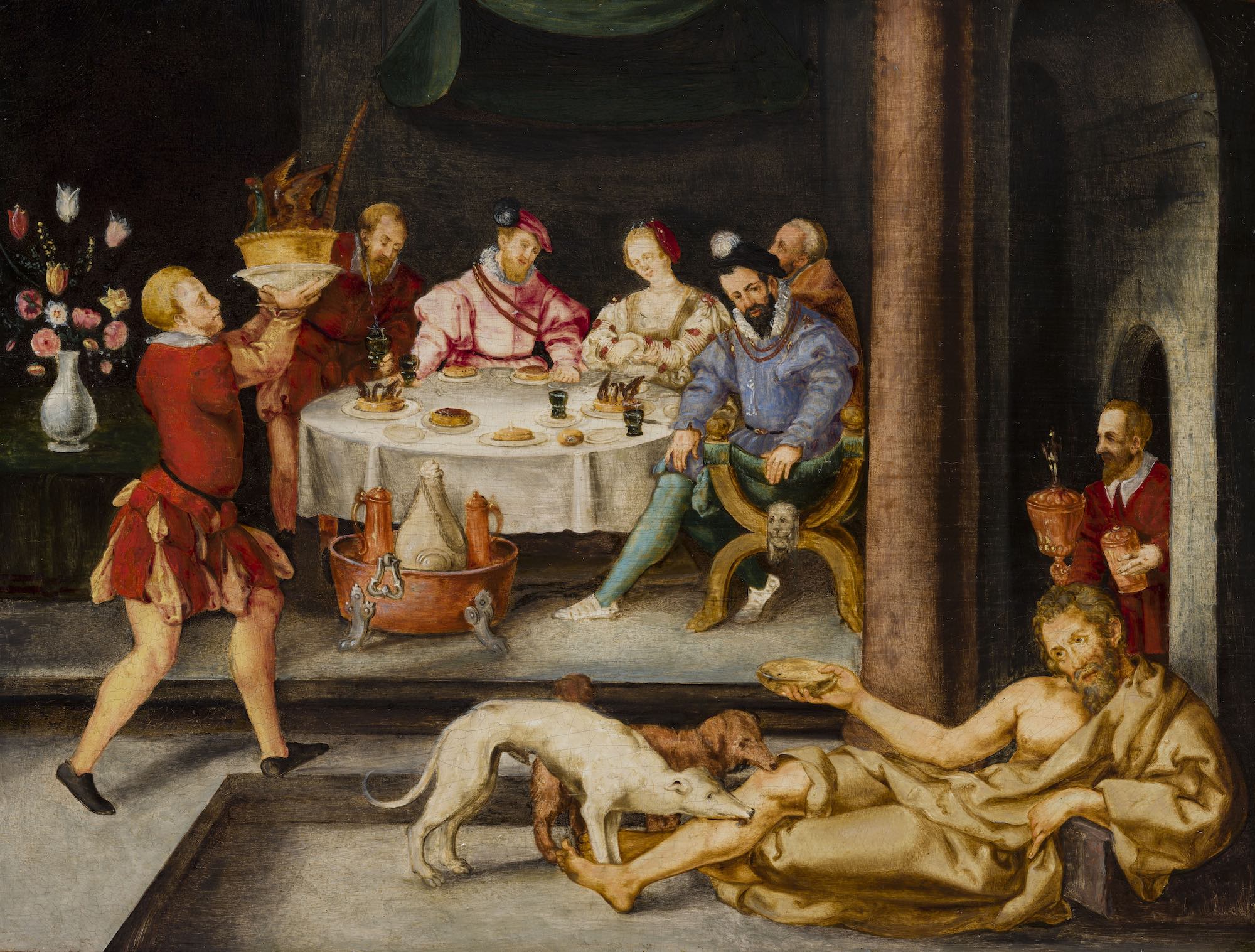From knives and roast birds to forks and bird pies: Changes in food fashion
Dives and Lazarus is a parable told by Jesus, and recorded in Luke 16:19-31, in which the rich, greedy, and gluttonous Dives refuses to give any food to the poor and afflicted Lazarus who is begging at his gate. When they die, Dives ends up in hell while Lazarus goes to heaven. This painting was made as a warning to avoid greed and gluttony (two of the Seven Deadly Sins) and as a reminder to exercise charity by feeding the hungry (the first of the Seven Works of Mercy as prescribed by the Catholic Church).
This small, early 17th-century panel of Dives and Lazarus by an unknown Antwerp-based painter was cleaned for Feast & Fast by Elisabeth Petrina, under the supervision of Rupert Featherstone, at Cambridge University’s Hamilton Kerr Institute. Elisabeth painstakingly removed several layers of dirt and old yellowed varnish from the surface to reveal the well-preserved original paint layers, full of well-observed, brightly coloured details. Scientific analysis was undertaken, including dendrochronology by Ian Tyers, to try to clarify when the painting was made. The results indicate that the panel came from a tree felled after c.1563, making it likely that the panel was painted at some point after that and the early 1600s.
It was always known that this painting was based on an earlier (1554) engraving of the same subject by the German Lutheran artist, Heinrich Aldegrever (fig. 1). What the conservation reveals is the extent to which the yet-to-be-identified painter has adapted the details of the original composition in order to modernise it, making it relevant to his audience. In terms of the scene’s setting, he omitted the three windows in the background with their rather old-fashioned bottle-glass roundels in favour of a plain dark background, and he exchanged the tiled stove at left for a table set with a vase of beautifully rendered flowers, including fashionable tulips. The clothes and accessories have also been updated to keep up with fashion: ruffs have replaced flat collars, and swords eliminated.

What is most significant in the context of Feast & Fast is the deliberate change in menu and tableware. In the original 1554 print, Dives’ status and wealth is indicated by the fact that he is about to devour a large roast bird. By the early 17th century, elaborate pies crowned with birds were now the height of luxury, which explains why the painter included several on Dives’ table. And instead of the two covered dishes, the servant now carries in an enormous pie, with a pheasant on top for ornament and to indicate its contents. Dives’ elite status is highlighted further by the inclusion of forks (revealed in the recent clean) – still a novel type of cutlery in the Low Countries when the painting was made. In the original print, the diners eat exclusively with knives. Forks were an Italian invention and became popular in wealthy circles across Europe from the early 17th century onwards. They were regarded as an indicator of refined manners and cleanliness, with diners no longer having to eat food with their fingers.

This kind of expert and painstaking cleaning of historical paintings conducted by Cambridge University’s HKI proves how even the smallest of panels can reveal enormous cultural shifts in dining habits in early modern Europe.





